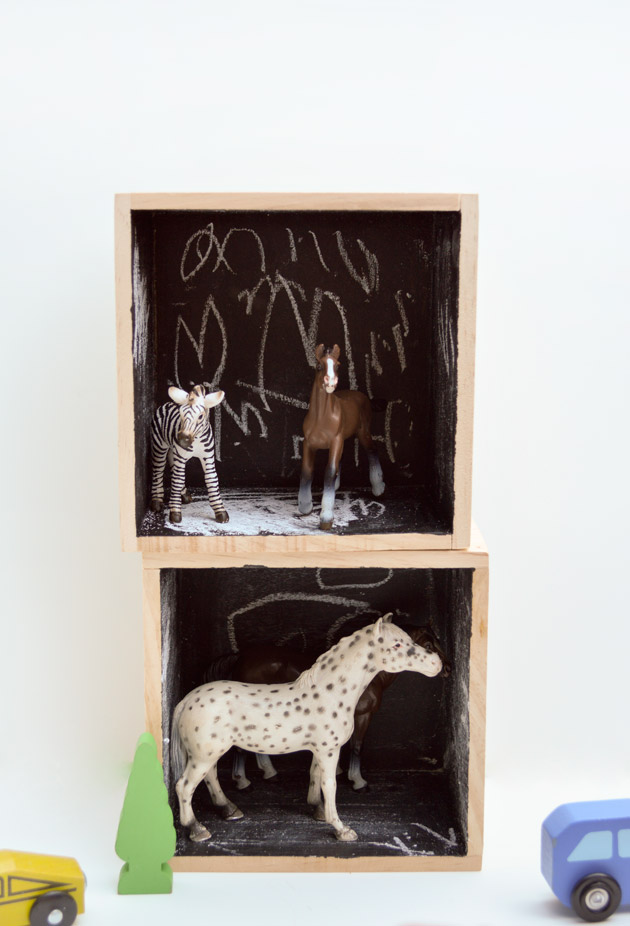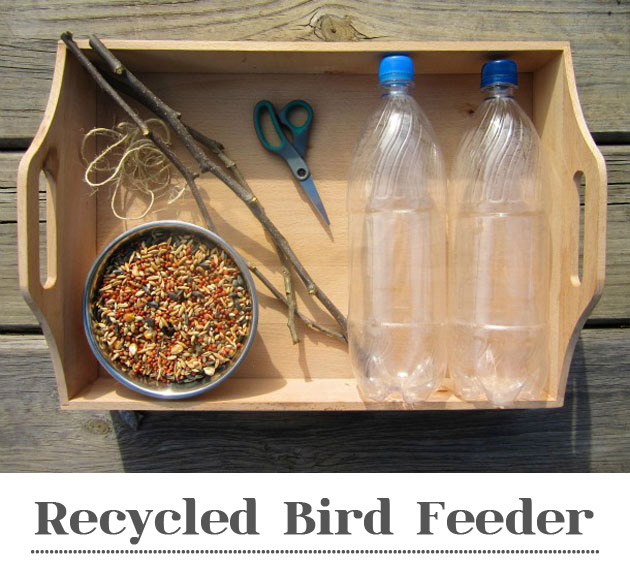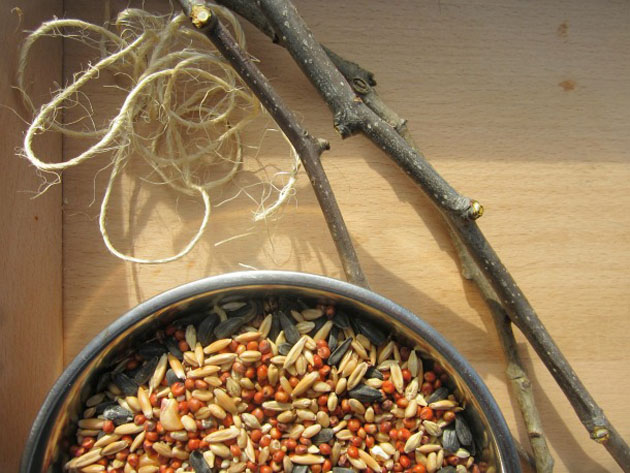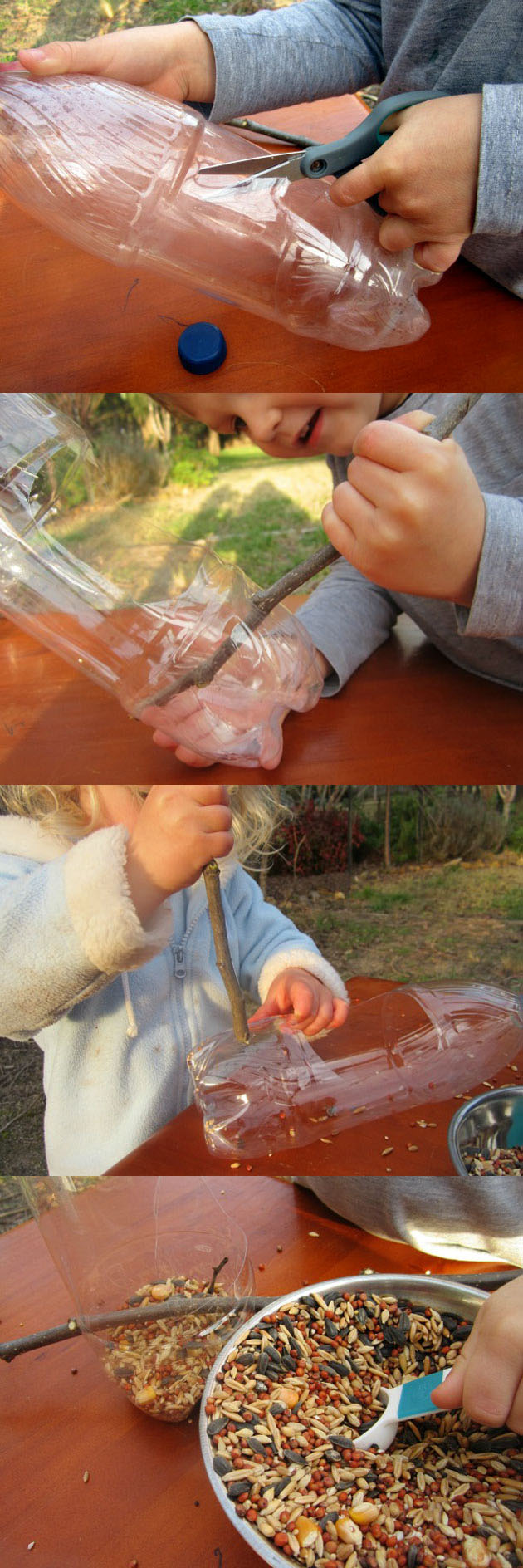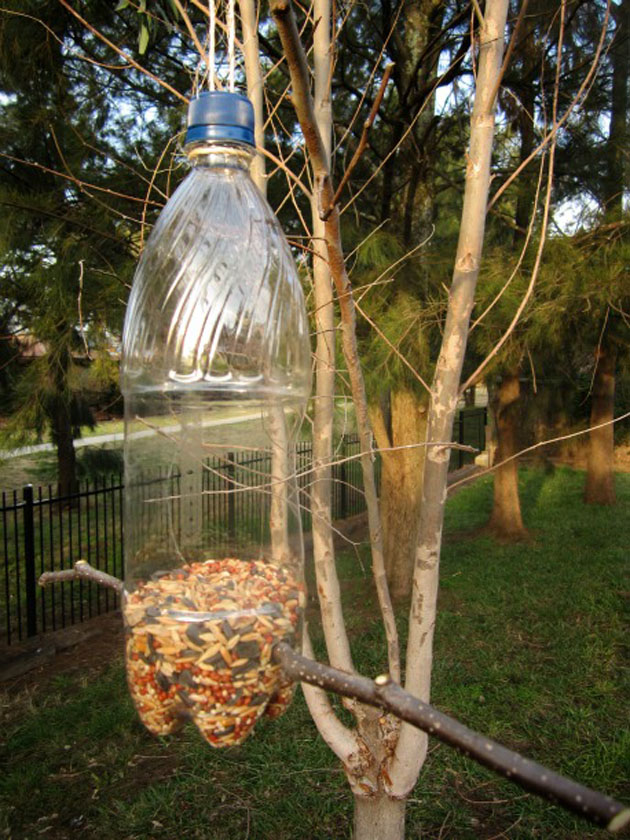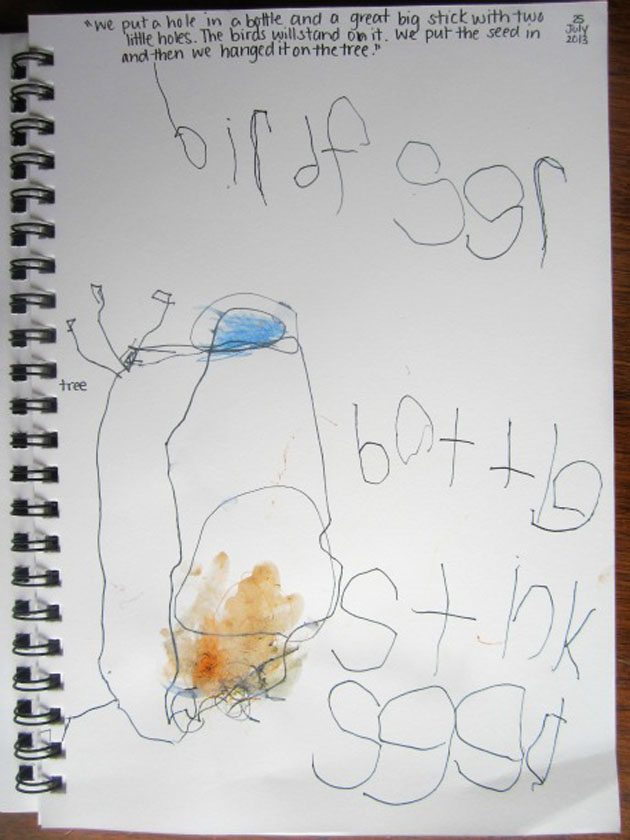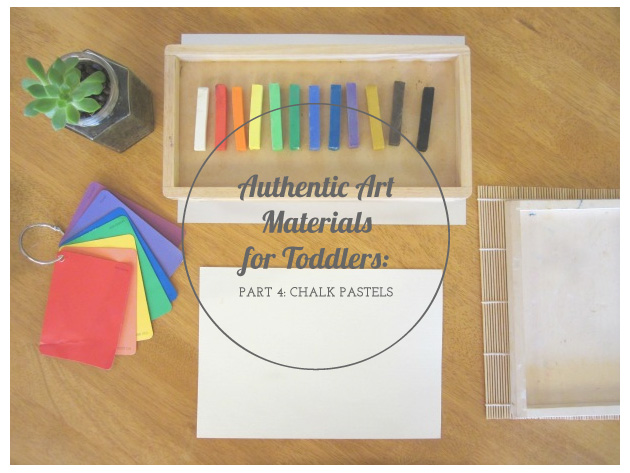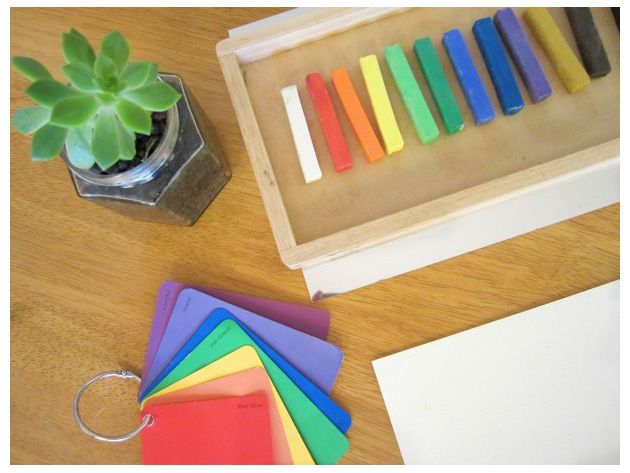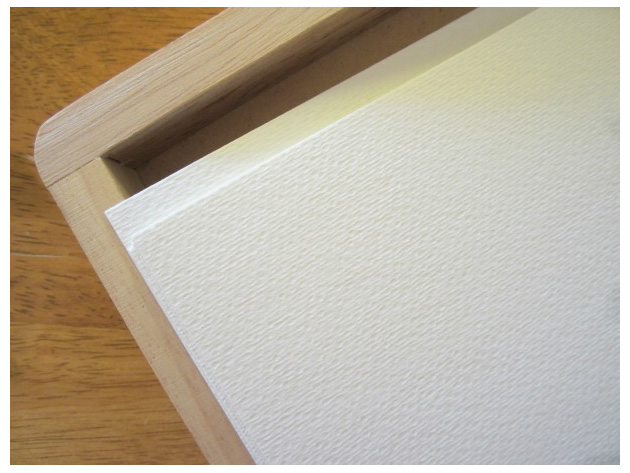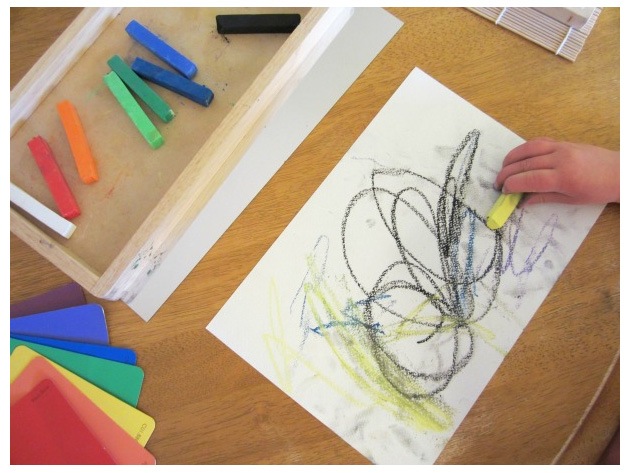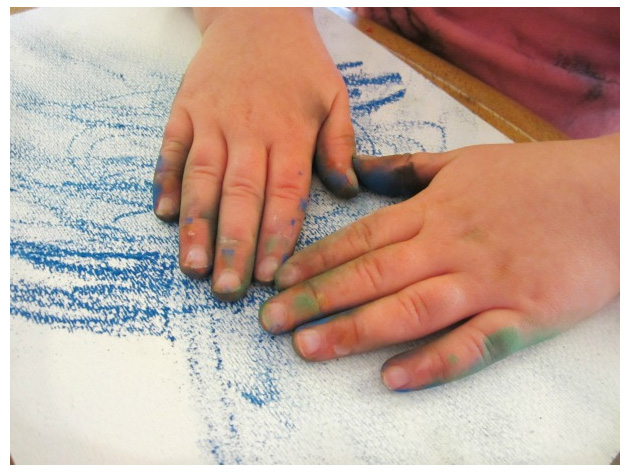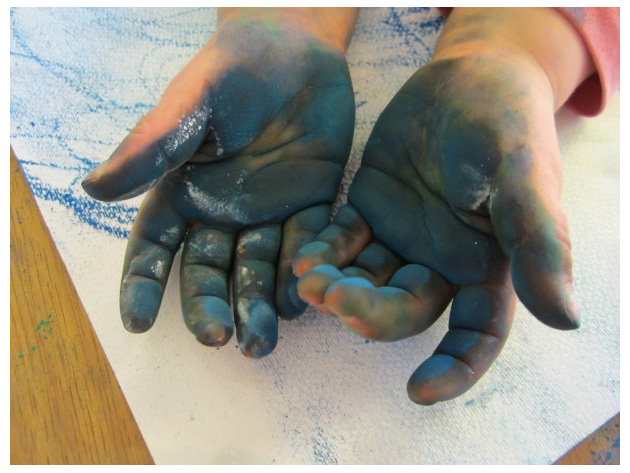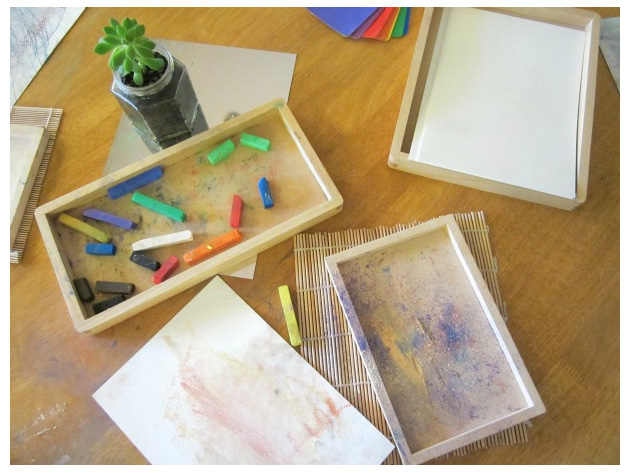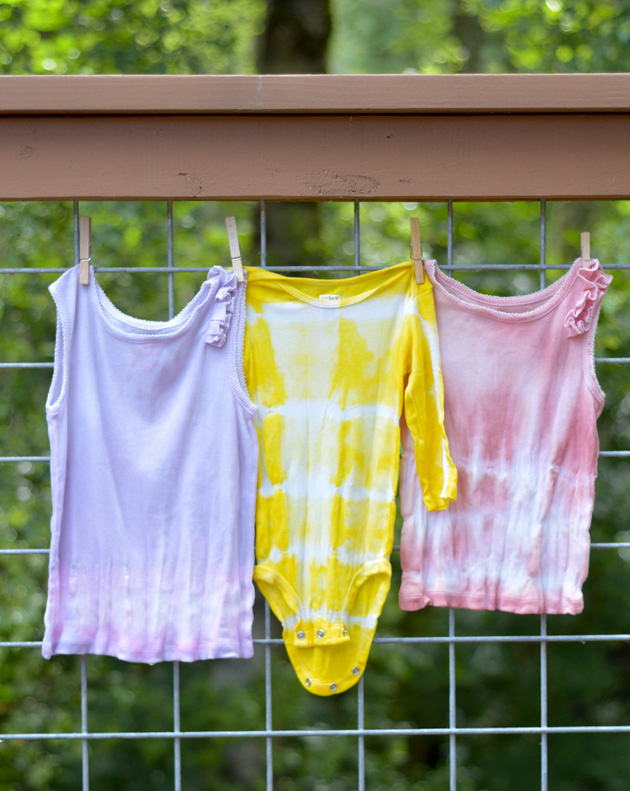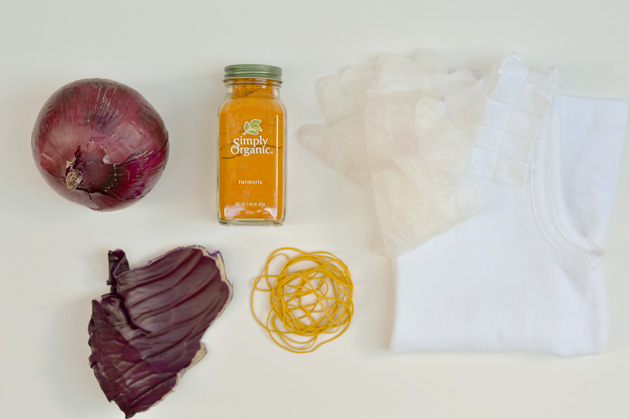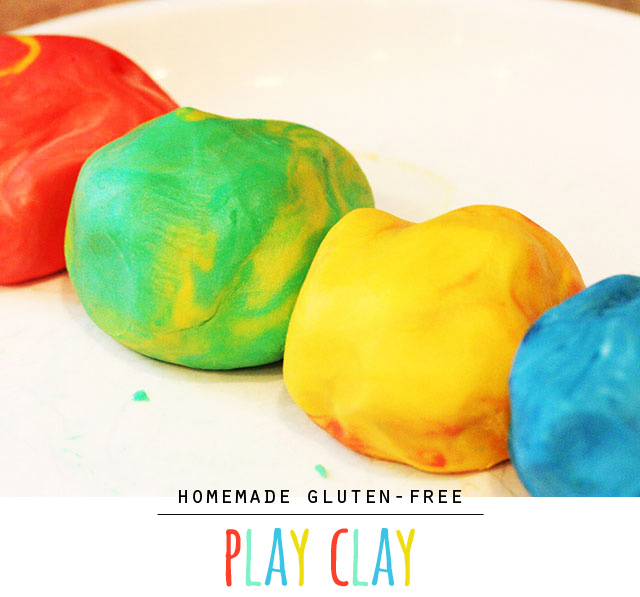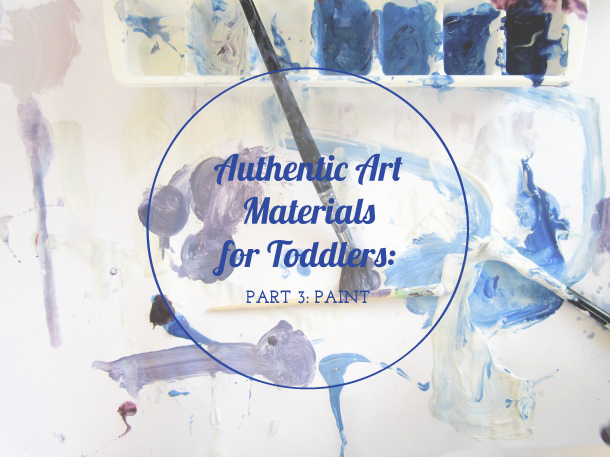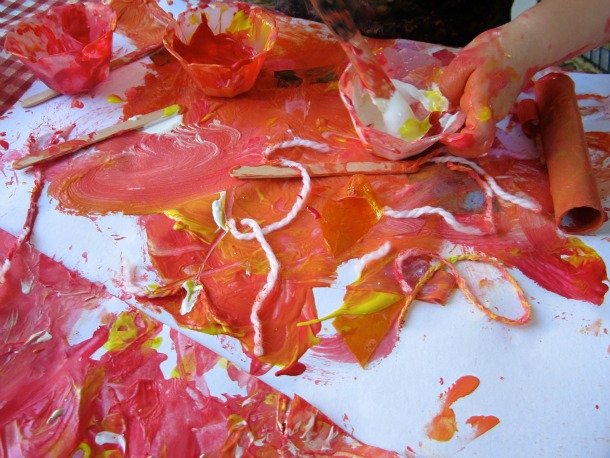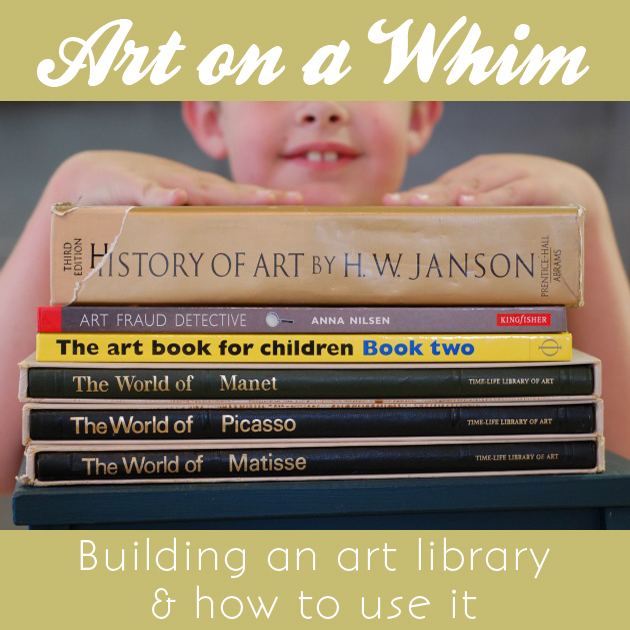
Becky from a Sweet Hot Mess is with us today to share all of her favorite resources for exploring art and artists with children…
My children love to draw and construct, paint and sculpt. Art is by far their favorite pastime. I’m sure it’s your children’s favorite pastime as well. In that vein, many of us keep art supplies on hand, from watercolors to cotton balls, popsicle sticks to crayons – we provide a veritable bounty of hands on goodness for our kids.
To further this passion, I have committed to building a library of art reference books as well. I keep them at hand (and typically near our largest art center) and am ready to drop everything when they seek me out to teach me a new technique or ask me a question regarding art history.
Most recently, my children heard a reference to “expressionism” on one of their shows and sought me out for further enlightenment. I immediately do what I do best – ran to my library of reference materials and dug out a few that would work in a pinch. Here are a few of my favorite art books we have laying around.

Last year, our Librarian asked me to recycle a bunch of encyclopedias and a large collection of Artists throughout history was included in the trunk full of musty old books. I immediately brought them home and they have been a favorite ever since (check with your local library to make sure you’re notified if/when they are rotating materials off the shelf – you might get lucky!). In that my kids had asked me about Expressionism, I grabbed Picasso and Matisse and on a whim I grabbed Manet as well.
I also have collected a few art compendiums, some children’s art books and even have started collecting artist’s autobiographies geared towards younger ages.
If you are limited on space or had to pick – pick a really good compendium of art. Here are a few on my wish list.

1, 2, 3, 4, 5
The subject matter to study with your children does not matter – go where their curiosity leads you. My children specifically led me to impressionism and expressionism. The following art project can be done with any period of art and highlight how we can put our art libraries to use.
So to begin our art lesson on a whim – pull out your supplies. In this case, I had just found a 5 pack of bingo dabbers at the dollar store (which are essentially dot sponges filled with watered down paint). We’ve been dying to use these and this proved to be the perfect opportunity.

I highly recommend keeping the art tools to a minimum, so that the focus remains on the reference material and your art lesson doesn’t become an art free-for-all (my children have plenty of these). So, pick one medium such as crayons, watercolors, chalks or paint and set up your art area. What has worked best for us is to keep a roll of paper around as our safety net. I tape this down and then tape down their paper to their temporary art station.
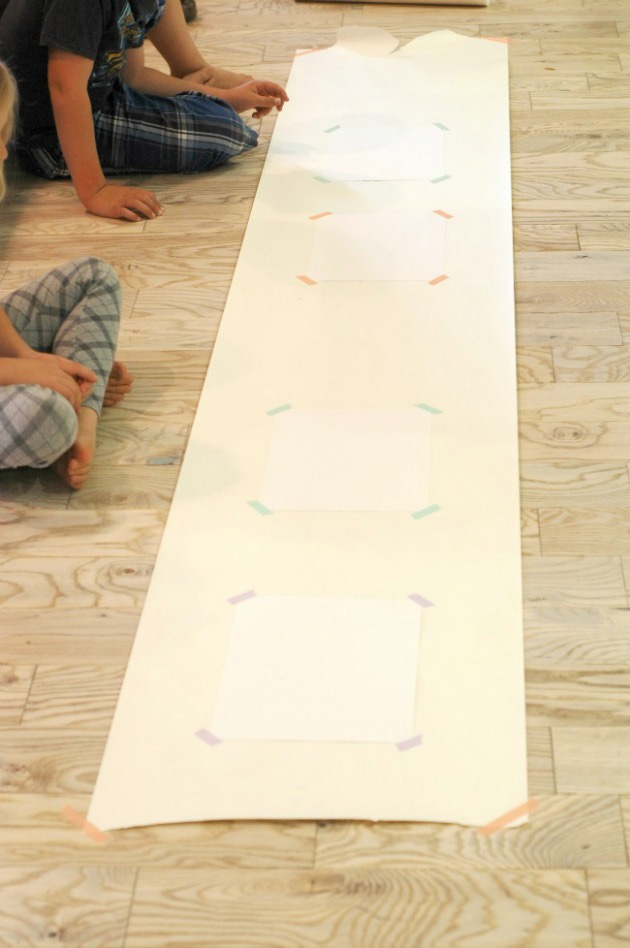
Since my children asked about Expressionism and I deemed it essential to backtrack a bit and introduce them to Impressionism to allow for historical context – I needed to have two sketch papers to each of their stations.

After a quick lecture on the two art periods, I had the kids write down reference words to help remind them which period represented what. As with most of my kid’s learning – I introduce them to a lot of information, don’t dumb it down and yet make sure there are two or three key concepts I want them to walk away with no matter what. I am always surprised with how quickly they learn these concepts and how much extra information they glean along the way.
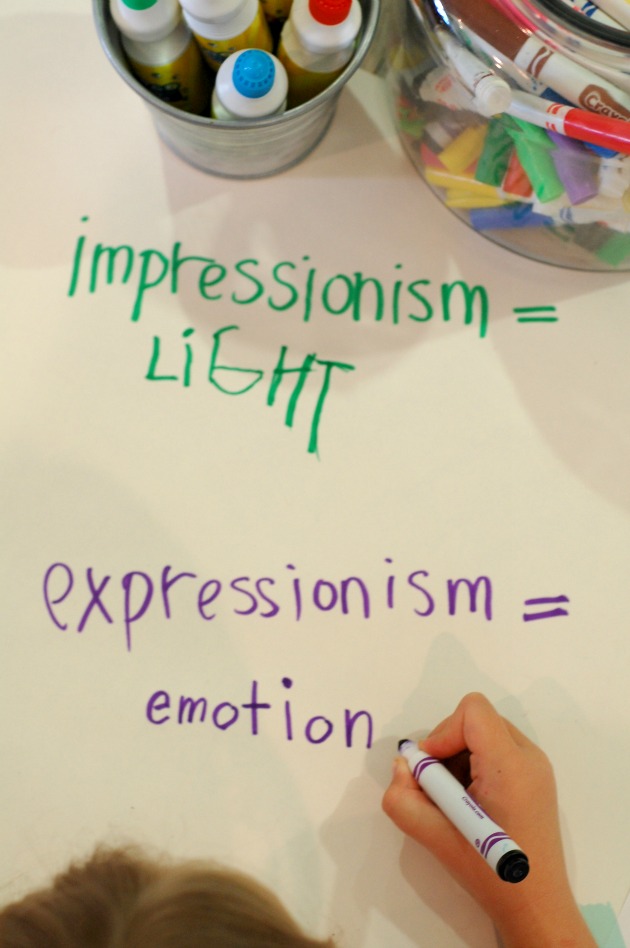
At this point, we sat on the floor and dug through our books. I had the kids pick an painting that inspired them from both periods in art history.

After setting up our books, readied our tools and I was able to show them how the Bingo dabbers worked.
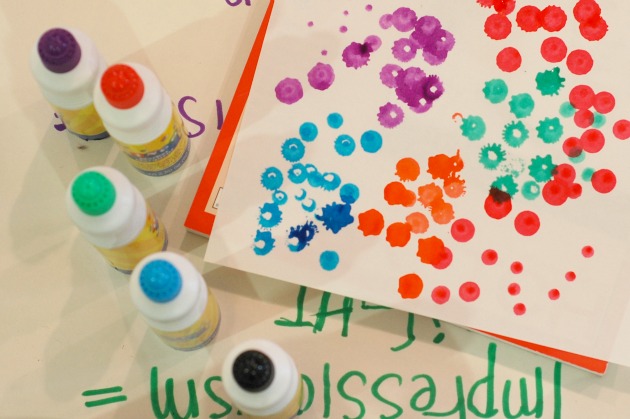
I will typically work ahead of the kids or even with them on my own art so that they have an additional reference point as to what is expected – plus it’s fun. Make sure your kids are started before you show them a peek of your art, so as to minimize copying.

This is the point where I sit back and let them create. It’s fun to watch them interact with each other, check out each other’s work and talk their way through their creations. The dabbers proved to be a fun new tool, though with a limited palate which frustrated the kids at times – I had to keep reminding them to think outside of the box. Limitations help us innovate.
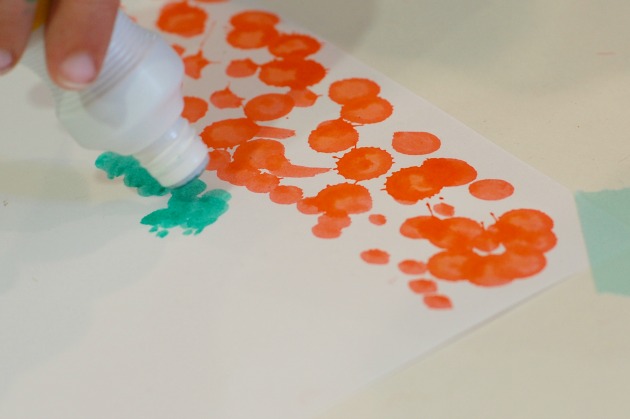
The kids quickly learned all the various ways to use the dabbers, so as to make their two pieces stand out next to each other.
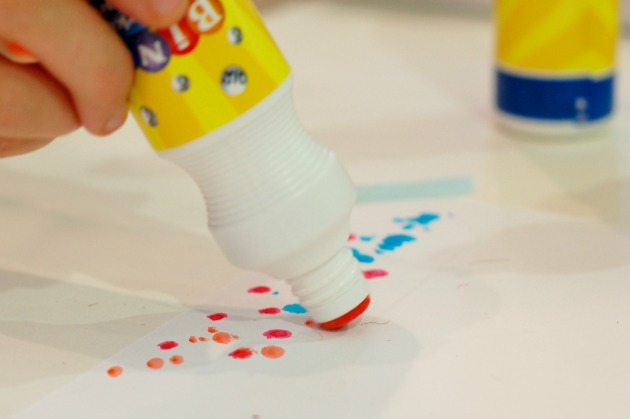
I’m glad they picked up on the Impressionistic quick strokes (or dabs) of the paint, whereas they leaned towards thick bold lines with their Expressionistic pieces.

This approach worked very well for my two children in that there are both inclined towards art in very different ways. So, while my daughter was very concerned with a deft hand, color and line – my son was able to connect to his piece through his newfound knowledge of these two art periods (ie: her finished product was very important to her while his was not, but the art lesson was)
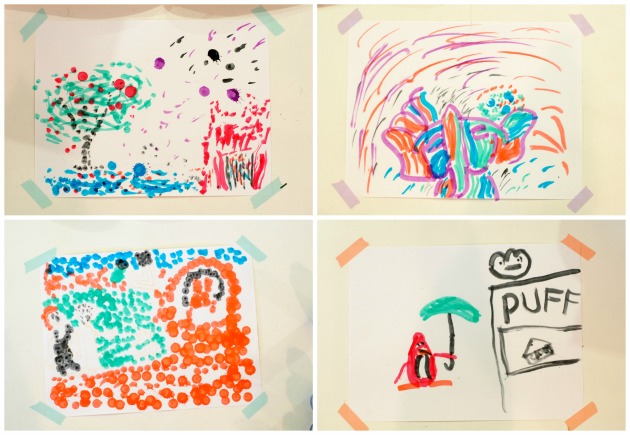
I call this art on a whim, because I have to be prepared to drop everything and take advantage of this curiosity when it strikes. My children are very independent artists and want very little input, so when they approach me with a question or for help with a new technique – I try to be as available as possible.
Plus I have a theory that curiosity is a finite resource – that if we do not mine it, foster it and take advantage of it…it will fade. Or at the very least, my children will stop coming to me to answer to their curious moments in life.
And if your children need a little nudge, pick an art period or artist and introduce it yourself and see what questions arise.



